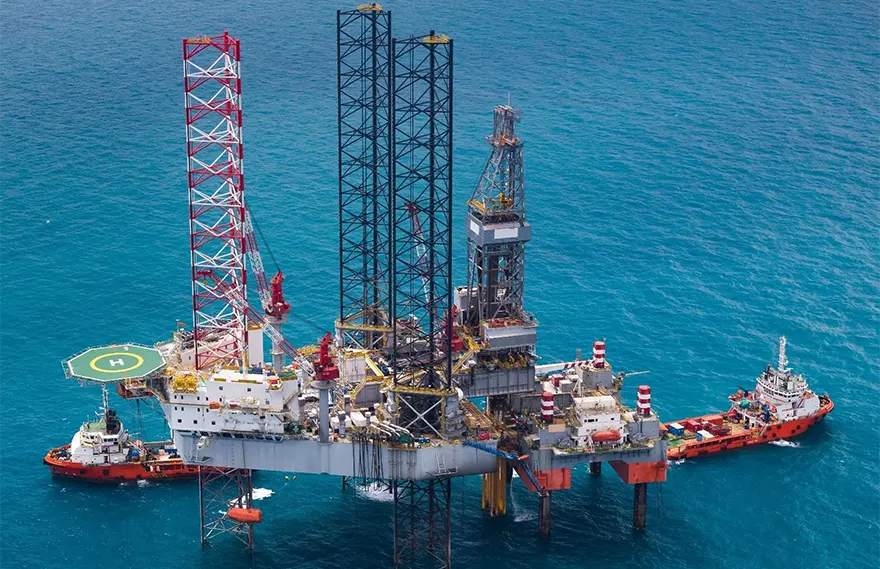In offshore oil engineering, blind valve and FPSO are two key components, which have their own process characteristics and use requirements. The application of blind valve in FPSO also needs to follow the process characteristics and use requirements of the product to ensure the safe and stable operation of the entire system.

Definition of blind valve and FPSO
Blind valve is a valve used to cut off or isolate pipeline media. It inserts a blind plate into the pipeline to achieve complete isolation of the medium.
ZZJG blind valve combines the design concepts of well-known domestic and foreign manufacturers such as Onis, Hammier, Sammi, Schuf, etc., and independently develops the 16-inch class150 quick-cut blind valve. It has a simple structure and mainly includes valve body, blind plate, drive device and other parts. The main features are that it can achieve “human” level safety protection, good sealing performance, convenient operation, and can withstand high pressure. It is widely used in pipeline systems in industrial fields such as petroleum, chemical industry, and natural gas, which can effectively prevent medium leakage and ensure production safety and smooth maintenance work.
FPSO, or floating production storage and offloading unit, is a large offshore oil and gas production facility that integrates offshore oil production, storage, transportation and life transportation. It usually has no fixed berthing position and can move freely at sea. It can simply process and store the oil and gas extracted from the seabed, and then transport the stored crude oil to the shore through shuttle tankers. FPSO has the characteristics of adapting to a wide range of water depths, a short construction period, and relatively flexible investment, and plays an important role in deep-sea oil and gas development.

Precautions for using blind valves in FPSO
The characteristics of blind valves and FPSOs determine that the following matters need to be paid special attention to when blind valves are used in FPSOs:
Adapt to the marine environment: FPSO works in the marine environment and faces harsh conditions such as high humidity, high salt fog, and strong winds and waves. The material of the blind valve must have excellent corrosion resistance and fatigue resistance to resist the corrosion of seawater and marine atmosphere and avoid medium leakage due to valve damage. At the same time, the sealing performance of the valve should remain stable in this environment to prevent seawater from entering the pipeline system or oil and gas from leaking into the marine environment, which will cause environmental pollution and safety accidents.
Meet space restrictions: FPSO space is limited, so the equipment layout is relatively compact. The selection of blind plate valves needs to fully consider the size of the installation space, and select models with compact structure and small size so that they can be installed and operated smoothly in a limited space. In addition, the operation method of the valve should also adapt to space restrictions, such as using electric or pneumatic drive devices to reduce the space and physical strength required for manual operation.
Deal with pressure and temperature fluctuations: The oil and gas media processed by FPSO usually have high pressure and temperature, and during the production process, the pressure and temperature may fluctuate to a certain extent. Blind plate valves must be able to withstand the impact of these fluctuations, and their design pressure and temperature should meet the actual working conditions of the FPSO production system. During the manufacture and installation of the valve, it is necessary to ensure that its strength and sealing are not damaged when the pressure and temperature change to avoid leakage or valve failure.
Ensure operational safety: There are flammable and explosive oil and gas media on FPSO, and the operation of blind valves must be safe and reliable. The drive device should have good explosion-proof performance to prevent fire or explosion accidents caused by electric sparks. At the same time, the operation of the valve should be simple and easy to understand, and there should be clear instructions and interlocking devices during the operation to avoid misoperation. When opening and closing the blind valve, it is necessary to strictly follow the operating procedures to ensure the safety of the operator and the stable operation of the system.
Easy to maintain and overhaul: Since FPSO is far away from land, the maintenance and overhaul of equipment is difficult. The blind valve should be designed with a structure that is easy to maintain and overhaul, such as a detachable design, which makes the replacement and maintenance of parts more convenient. At the same time, the blind valve should be inspected, cleaned and lubricated regularly to detect and deal with potential faults in time, extend the service life of the valve, and reduce production interruptions caused by valve failures.
In short, the application of blind plate valves in FPSO needs to comprehensively consider factors such as marine environment, space limitations, pressure and temperature fluctuations, operational safety, and maintenance and repair. Only in this way can the role of blind plate valves be fully utilized to ensure the normal production and operation of FPSO.
If blind valves are often used in your process pipelines, you are welcome to leave a message for discussion. Our engineering team and I will sincerely serve you and discuss and solve any problems encountered in the selection and use of blind valves with you.
DO YOU HAVE QUESTIONS? WE ARE HERE TO HELP YOU!